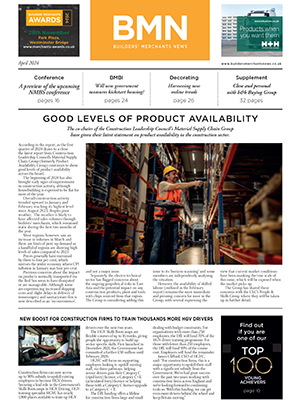When you look at a spreadsheet of customer turnover and profits you might find that those customers who give you the lowest margins are often the ones who give you the highest sales revenue. But should this be the way?
One could argue that those giving you the highest volume are the ones who most depend on you. The question is: how many merchants are disciplined enough to ask the right questions of the builder and how good are those merchants at gathering market intelligence?
How effective is your marketing function when it comes to understanding these issues and do you really understand your market?
Building materials salespeople are sometimes driven by an obsession for volume. This could be because their management don’t scrutinise or understand pricing well enough themselves. During my career, in the marketing of building materials, I have worked with – and managed – hundreds of salespeople, but very rarely do I hear any of them say “I lost that order because my price was too high”.
Surely all selling is a numbers game; if you price five builders or contracts you would expect to secure at least two or three of them. In building product sales we seem to keep lowering the price until we win them all. What is required is a re-education so that volumes are not as important as margin.
Some cultures believe that as the market volume goes down, the price automatically goes up to compensate for a loss in revenue contribution. While I don’t see this happening in the UK, there are ways of improving margins, particularly in light of the fact that the market has reduced so much in volume.
The first thing a business needs to do is to have regular price increases, such as on January 1 and June 1 of each year, giving you a set period in the year to update catalogues, price lists, pricing templates and introduce new products. This doesn’t mean to say you are going to get a 10 or five-percent price increase each time, but it does allow you the opportunity and discipline to lever your price up on slow-moving items or for customers who have a high dependency on your operation.
If you don’t implement a price increase then you won’t get one, even if your costs go up and volumes remain low.
Merchants need to understand their competitors better by carrying out market audits. As a result of this process of management, it will become clearer why certain customers buy, for example, plasterboard from you and not from a competitor whilst with the same product another builder will go to the competitor. Too often we say it’s because of price when, in fact, it is due to things like the geographical location or the availability of credit.
How often does your external or internal sales staff insist on getting competitor hard copy evidence when they are trying to justify the need to lower a price? When they get it, do you track that information over time and observe trends?
Remember that in terms of building materials, margins only appear to be going down which certainly justifies your need to increase prices. And, even though you might be putting prices up where you can, changes to the business and product mix means you could soon find the margins reducing again.
Don’t underestimate how important factors like stock availability and geographical location are to a builder. These considerations can add real value to your business.
Also remember: as the new house market starts to come back, are your suppliers going to cope with their reduced output and what will this mean for your purchase price?
Tony Crutcher is a building materials sales and marketing specialist.







